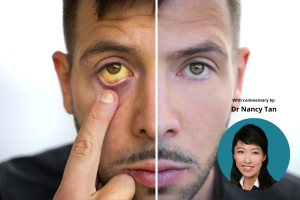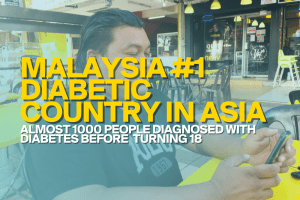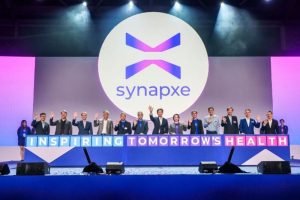Researchers from the National University of Singapore (NUS) have discovered that milk particles can help treat chronic diarrhoea & abdominal pain
These nanoparticles, milk-derived extracellular vesicles (mEVs), derived from cow’s milk and human breast milk, could be a potential new treatment for patients with Leaky Gut Syndrome, who suffer from chronic diarrhoea and abdominal pain. These mEVs can suppress inflammation and repair damaged gut barriers. In addition, it can prevent the leakage of gut bacterial toxins into the bloodstream. Researchers published the study in Science Advances in April. The research was conducted by the National University of Singapore (NUS).
The study discovered that mEVs derived from cow’s milk and human breast milk contained proteins and small nucleic acids that suppressed intestinal inflammation and repaired the damaged gut barrier. The researchers noted that mEVs prevented the leakage of gut bacterial toxins into the bloodstream, which could otherwise lead to toxin-induced liver damage.
What is Leaky Gut Syndrome?
Leaky gut syndrome is a collection of symptoms such as chronic diarrhoea, constipation, flatulence, abdominal pain, bloating and nutritional deficiency. Non-alcoholic fatty liver disease, inflammatory bowel disease and irritable bowel syndrome also exhibit these symptoms. The gut barrier in our gastrointestinal tract allows only accepted nutrients from food to pass through and enter the bloodstream while keeping out trouble-causing bacteria, viruses and toxins. However, excessive intake of processed carbohydrates and sugar, food additives and preservatives, heavy alcohol consumption, smoking, chronic stress, antibiotics and painkillers can cause the barriers to fail, leading to defective or porous barriers that allow unsavoury agents to pass through.
How do these milk nanoparticles work?
Asst Prof Wang Jiong Wei, lead researcher of the Nanomedicine Translational Research Programme and Centre for NanoMedicine at the Yong Loo Lin School of Medicine at NUS, said that the mEVs could “recruit good anti-inflammatory immune cells while inhibiting or reducing inflammatory immune cells”. “They also stimulate the immune cells to produce anti-inflammatory proteins, thereby reducing gut inflammation and enhancing gut health.” In addition, the mEVs increase the diversity of gut bacteria, promote the number of good bacteria and keep a lid on bad ones. The mEVs function like probiotics but are more effective as they can go through the gut system and reach the bowel to act.

How are the mEVs obtained from milk?
The process is similar to cheese-making. The researchers use whey, the cloudy liquid that results after milk curdles. They separate the mEVs from the whey by subjecting the latter to high-speed spinning and purify them through a filtering system and a size-exclusion device.
How would the milk nanoparticles be taken?
Asst Prof Wang said that the average adult would need to drink 1 litre of milk a day to achieve those gut-protecting benefits. That is not feasible if one is lactose intolerant. The researchers are still working on getting clinical validation in humans. Therefore, it may take another two to three years to produce a commercial product. This could be a supplement in powder, capsule or drink form.
Conclusion
Leaky gut syndrome can lead to chronic diarrhoea, constipation, flatulence, abdominal pain, bloating and nutritional deficiency. The newly discovered milk-derived extracellular vesicles (mEVs) can potentially repair the damaged gut barrier. Additionally, it can suppress intestinal inflammation and prevent the leakage of gut bacterial toxins into the bloodstream. Lastly, it will increase the diversity of gut bacteria, thereby promoting gut health. A commercial product may take some time to develop. However, the discovery of these milk nanoparticles is promising for the millions who suffer from this debilitating condition.













